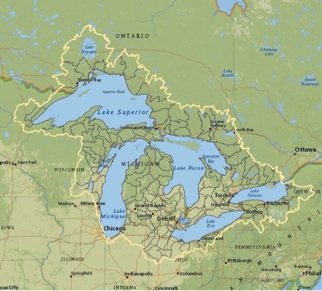
Image: International Joint Commission
A recent International Joint Commission (IJC) report recommends monitoring chemicals and toxic substances in the fluid and tissues of young children and pregnant women.
The recommendation came from a study that revealed nine themes about the Great Lakes that integrate environmental and human health data. The report made eight recommendations including that the Canadian and U.S. governments and public health practitioners plan to manage human health and environmental exposure for the Great Lakes Basin.
Other recommendations include that the governments:
- build onto databases that already exist like the Great Lakes Observing System
- improve the quality and applicability of data
- expand the suite of human health indicators and report the state of human health related to the Great Lakes environment
- survey the Great Lakes regional data so the two countries can compare health outcomes.
The binational commission’s Health Professionals Advisory Board prepared the report with more than 250 sets of data.
The board read relevant scientific literature and consulted with Great Lakes experts, said Kate Bassil, manager of healthy public policy for the board.
The data included environmental stressors, environmental hazards, human exposure and human health outcomes, according to the report.
The data will “help us all better understand the current state of health in the region and establish the basis to make improvement in the quality of life for all,” Russell Lopez, a board member and senior research fellow at Northeastern University’s Dukakis Center for Urban and Regional Policy, wrote in the report
The board is evaluating efforts in restoring the Great Lakes to helps identify “hot spots” and will analyze the data as its next step, Bassil said.
David Dempsey, policy adviser for the commission, said toxic pollution is a problem for the Great Lakes and the amount of phosphorus in them needs to be reduced.
“The ultimate goal is that the integrated data will help enable decision-makers and will benefit the ecosystem and the Great Lakes,” said Bassil.
The project was funded through the IJC’s Great Lakes Priorities for 2012-15.
“The reason for the report was the commission recognized health and environmental responsibility in linking the environment and human health,” said Bassil.